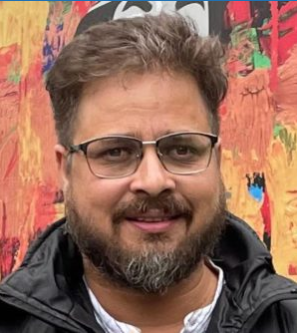
Editor, Goemkarponn
AERIAL VIEW
Indeed, the Transport department had to do out-of-the-box thinking as too many mean too many fatal accidents were reported this year, but is this the solution?
There are a few questions, though, following this development. How will AI reduce accidents? What happens to the tourist vehicles like rent-a-car/ rent-a-bike? Who will pay those challans after tourists have left?
Will the owners, who have given vehicles on rent, pay the fine? How will the AI recognize drunk driving? We know many of these accidents were due to drunk driving.
Secondly, with AI coming into the picture, will the police personnel who are given the monthly/ daily targets get back to their actual work of law and order?
SURAJ NANDREKAR
Editor, Goemkarponn
On Wednesday, Transport Minister Mauvvin Godinho handed over 10 Speed Portable Speed Radar Guns to Police Department.
Addressing the media, Mauvin Godinho said the Transport department is working on various things to instil discipline on the road, and these portable Speed Radar Guns will help identify overspeeding vehicles.
From June 1, that is today, Artificial Intelligence used cameras installed by the PWD department will be operational.
The speed radar is high Definition Camera that will automatically capture clear video and images with Automatic Number Plate recognition of speeding vehicles up upto 200 Meters in the Day time and up to 100 meters at Night time using Infrared technology on a High-Security Number Plate.
So now, we will get e-challans, aka Gulf countries like UAE, Qatar etc.
We know rash driving and overspeeding are the major cause of these road accidents in Goa.
It is shocking that in 2022 there were 3007 road accidents, and 251 people died.
Despite the increase in fines in the new motor vehicle act, high fines are not a deterrent as people are still breaking the traffic rules he added.
Indeed, the Transport department had to do out-of-the-box thinking as too many mean too many fatal accidents were reported this year, but is this the solution?
There are a few questions, though, following this development. How will AI reduce accidents? What happens to the tourist vehicles like rent-a-car/ rent-a-bike? Who will pay those challans after tourists have left?
Will the owners, who have given vehicles on rent, pay the fine? How will the AI recognize drunk driving? We know many of these accidents were due to drunk driving.
Secondly, with AI coming into the picture, will the police personnel who are given the monthly/ daily targets get back to their actual work of law and order?
The Calangute MLA Michael Lobo was right when he pointed out that police stations are given daily targets.
It is shocking to know that many times accidents occur due to these policemen, who hide behind the bushes and pounce on the two-wheelers when are reach closer. Will this stop?
We all know Mauvin Godinho is a techno-freak guy who just loves “new technology” be it speed governors, digital meters, app-based taxis or so on. I
implementation of all these above has gone awry so far.
None of the taxis uses digital meters, nobody checks whether the vehicle has speed governors, nor is there any use of app-based taxis in Goa as you don’t get it except for airports.
Hopefully, AI technology does not meet the same fate.
What instead was needed was better roads with good signages, speed breakers or humped being painted and a check on drunk driving.
Simply widening the roads and placing AI cameras won’t help. Goa needs proper road planning as most of them have been planned without the application of mind.
For example, the Atal Setu exit, which lands at KTC, should have been after Merces Circle, which could have avoided major traffic congestion at this circle.
Similarly, the Zuari bridge end should have been after the Verna Titan junction. It would have curbed hundreds of accidents which happen every month here.


